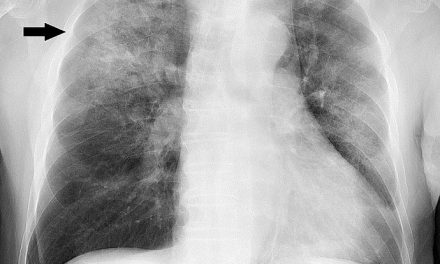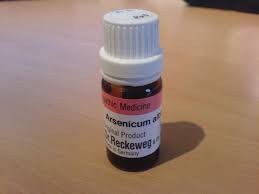R. G. Reed, M. D., Cincinnati
On reflecting over some of the events of my medical career of thirty-eight years, I have felt humiliated, resentful, and then a pity, that I should have been so long in apprehending the great possibilities of our system of therapeutics. Humiliated, because so much time was spent in misdirected effort; resentful, because I had placed confidence in those teachers who should have been able to direct me in right ways; and then a real pity for those who were open to the truth but never had it impressed on them.
On entering medical college I was imbued with the idea that the medical student went to college to learn how to study, but in later years I found that he went to college to procure the privilege of practicing medicine, and had to devote much time afterwards, unlearning what he had been taught.
This being the case, it is scarcely to be wondered at, if he did not have any definite idea of the difference between acute and chronic diseases. Nor is it any great wonder if he staggered before walking, and occasionally cured a case by accident. The following may illustrate. It occurred over thirty years ago, so there is no doubt of the permanency of the cure: A little girl, about eight years of age, was afflicted with a spasmodic squint which I could not control with glasses. Her mother complained of her crying out in her sleep at night. I examined her spinal column and found a decided curative; and while I could elicit no pain on pressure, she suffered with severe pain in right knee at night. No pain during day. Measurement showed right leg longer than left, by one inch. With patient lying on back, slight tapping on bottom of right heel caused pain in right knee. Mother was told that her child had hip joint disease and must be put taken to a distant city and examined by two competent men, one an allopath, the other a homoeopath, who unhesitatingly confirmed the diagnosis; and she was placed under my care. She could not endure a plaster cast, nor even an extension, so was placed in bed and remedies given. I say remedies, for in those days I knew nothing of the “Organon” or the “Philosophy of Homoeopathy” and after floundering about for a short time I gave her Calc. phos. 30 every 3 hrs. and Bacillinum 200 once a week. As she seemed to improve, this treatment was kept up for twenty three weeks, when recovery was complete. She grew to womanhood and, I understand married and is now the mother of four healthy children, and has no blemish of any kind due to hen former. Affliction. The cure I consider accidental and not due to any particular skill on the part of the physician, but I considered the experience useful as food for thought.
Another experience along the way was one of constipation with definite Nux vom. Symptoms. Patient had been under allopathic treatment for three months without benefit. She was given Nux v. 3x and 2x, over a period of three months without benefit; then she returned to allopathy for another three months, after which she discontinued all treatment for about four months, and then returned to me. No remedy but Nux seemed to fit the case, and she was again given Nux 3x every two hours without benefit. Wondering what else to do I saturated a two dram vial of No. 39 pellets with Nux 12x and bestowed them upon her with the result that I lost a patient, as she returned saying: “Dr. I don’t want you ever to forget what you gave me last, as the first dose helped me and I am quite well now. Why didn’t you give me that before?”
April 29, 1919, Mrs. C. S. came to my office in a very nervous and excited state of mind. She had come directly from the X-ray artist, with plates which showed the bones of her right forearm in a tuberculous condition, or at least so interpreted by one or our ablest roentgenologists. She was positive that the beginning of the end was at hand, but being a believer in homoeopathy, she was easily persuaded to try its power, and was given a few powders of tuberc. 50m. (Kent) which my record shows was not repeated until Aug. 3, 1921 – an interval of two years and three months; with the exception of a support to keep the arm quiet while it was so painful, this was all that was done. She reported at intervals that she was improving, and a few months after the last prescription she reported that she was quite well.
August 24, 1918, a young lady of twenty-two years presented herself for examination of her eyes, on account of an uncomfortable twitching of the muscles surrounding the right eye. She was refracted under a cycloplegic in the usual way, and the error of refraction corrected; but the twitching continued, extending into the right cheek and right side of the tongue. She was given Agricus Tr. Three drops, three times a day for about two weeks, which brought complete relief, lasting about one year. At the end of this time the twitching began again, accompanied by twinges of pain, and both increased in extent and severity, developing a well marked Tic Doloreux or facial neuralgia. She betook herself to a nerve specialist, and to at least three other physicians, who exhausted their scientific resources in the way of X-ray and other treatments, and then pronounced the case incurable, with no hope of relief except in having the ganglion removed. She then returned to me, Feb. I, 1920 and received one dose of Ignatia cm. March 9, not so well, B Ignatia M. March 24, no better, B Nat. mur. 2c April 19, no better, B Nat. mur. Cm. April 22, no better. B Ignatia cm. At this point the patient took to her bed, becoming very cross and irritable and on April 26 was given Cham. 15 with no benefit. April 29, B Agaricus 3x in repeated doses with no benefit. May I, after much study, she received one dose Kali carb. cm. Which was followed by marked improvement. One more dose of the same was given about twelve weeks later, which completed the cure.
These cases may serve to illustrate the groping of one who seeks the light, but who lacks the fundamentals upon which to work. There are very few present-day practitioners who have started out with any better understanding of the great principles of homoeopathy, than did the writer. Many graduates of the homoeopathic colleges have never been instructed in the teachings of the “Organon.” Many have never so much as read it. They have been taught, just as I was, that the principle of Similia Similibus curantur is all that there is in homoeopathy, without any reference to the value of symptoms, the dosage, the repetition of the dose, or the relation of remedies; and would as soon base a prescription on a few common symptoms, as on the best array of general symptoms that could be presented.
No wonder the school today has to depend on organization rather than on principle for its existence. A college where pure homoeopathy is taught would indeed be a dream, and in this materialistic age it could scarcely be hoped for. It appears to me that the greatest hope we can have for the propagation of the great law taught by the immortal Hahnemann is to be found in the American Foundation for Homoeopathy, with its devotion to the truth, both for the physician and the laity, and that it deserves the support of the profession to its fullest extent.




